本文由 Abraham John Architects 授权mooool发表,欢迎转发,禁止以mooool编辑版本转载。
Thanks Abraham John Architects for authorizing the publication of the project on mooool. Text description provided by Abraham John Architects.
Abraham John Architects:这片棕榈树里的别墅是以19棵高大的椰子树命名,这些椰子树在这片陆地上生长了几十年,这成为了这片别墅建筑设计的概念。这栋别墅有四间卧室,可以俯瞰着一片田野和一条季节性的小溪。置身于自然景观之中的别墅,在棕榈树之中,看上去就像是一个村庄,一片片的小房子依偎在80年前的椰子树之间,从道路的尽头望去几乎看不见。这里的树木已经存在了几十年,在这基础上,这让整个房子有了一种根深蒂固的存在感。
Abraham John Architects:Villa in the Palms is named after the 19 towering coconut palms that thrived for decades on the land, which dictated the villa’s concept and footprint. This four-bedroom house overlooks a field and a seasonal stream. Embedded into the natural landscape, Villa in the Palms appears almost village-like, pockets of small homes nestled between 80-year-old coconut trees, nearly invisible from points further up the approach road. The fact that the trees on site existed for decades gives the overall house a very rooted presence.
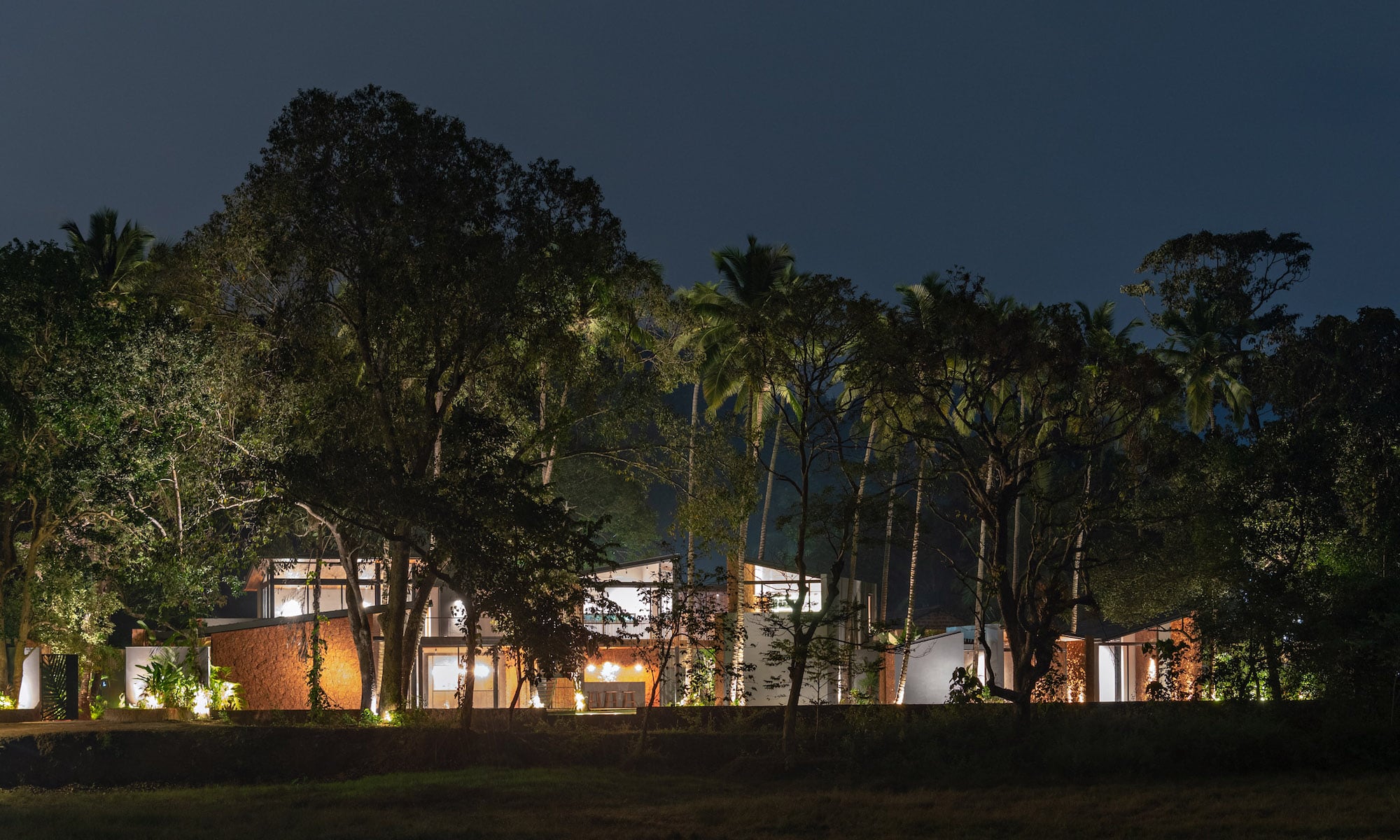
▼丛林景观 Goan jungle view
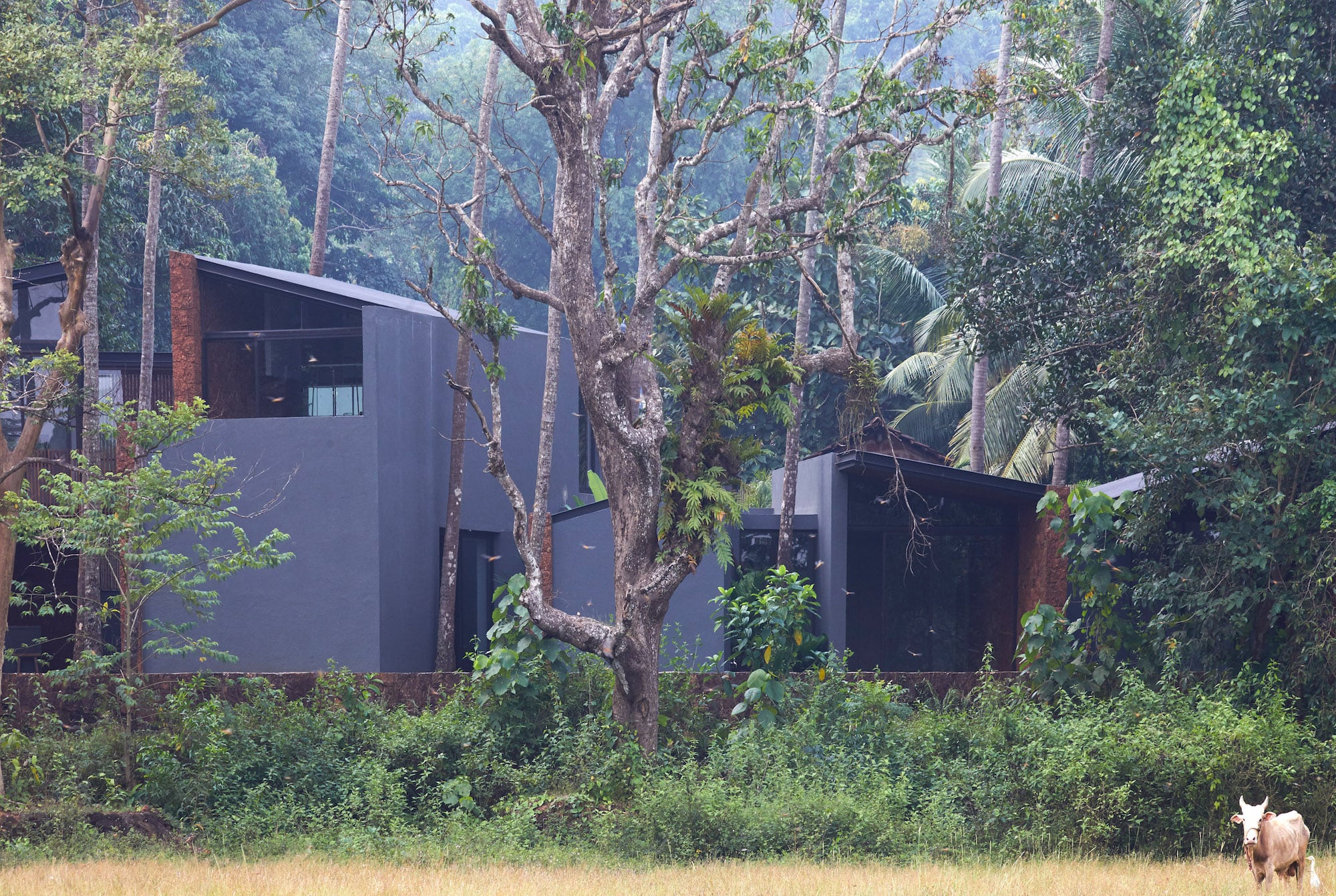
工作室的设计方法是将建筑与自然重新连接起来。要想建造一个常规的建筑,就需要砍掉几棵树来适应这个项目。避免这种情况的发生,以建筑在树木之间的条件,进行精心设计,没有破坏周围的环境,在建造过程中没有一棵树被砍伐。因此,这里的建筑不是单一的整体,而是分散的小个体,让人想起了过去的Goan村,但同时又完全是现代的。
The studio’s design approach is to reconnect architecture with nature. Designing a regular building block would have required the cutting down of several trees to accommodate the programme. To avoid this, the building was carefully designed between the trees, without disrupting the surroundings, and not a single tree was felled during construction.Consequently, the structure is fragmented rather than monolithic, reminiscent of an old-time Goan village but at the same time entirely modern.
▼概念设计效果图 Conceptual design renderings

▼实景平面 Imaging plane

例如,一楼的每一间卧室都感觉像是一个独立的家,里面有配套的浴室、后花园、前花园和一个内部庭院,庭院两侧是红土墙。这些独立的建筑与露天平台、通道和桥梁相互连接,这些桥梁蜿蜒穿过树木、池塘和花园。
Each bedroom on the ground floor, for example, feels like a separate home, replete with an en-suite bathrooms, a rear garden, a front garden and an internal courtyard flanked by laterite walls. These independent volumes are interconnected with decks, passages and bridges that meander through the trees and over pools and gardens.
▼一楼布局 The layout of level 1

▼内部庭院 Internal courtyard
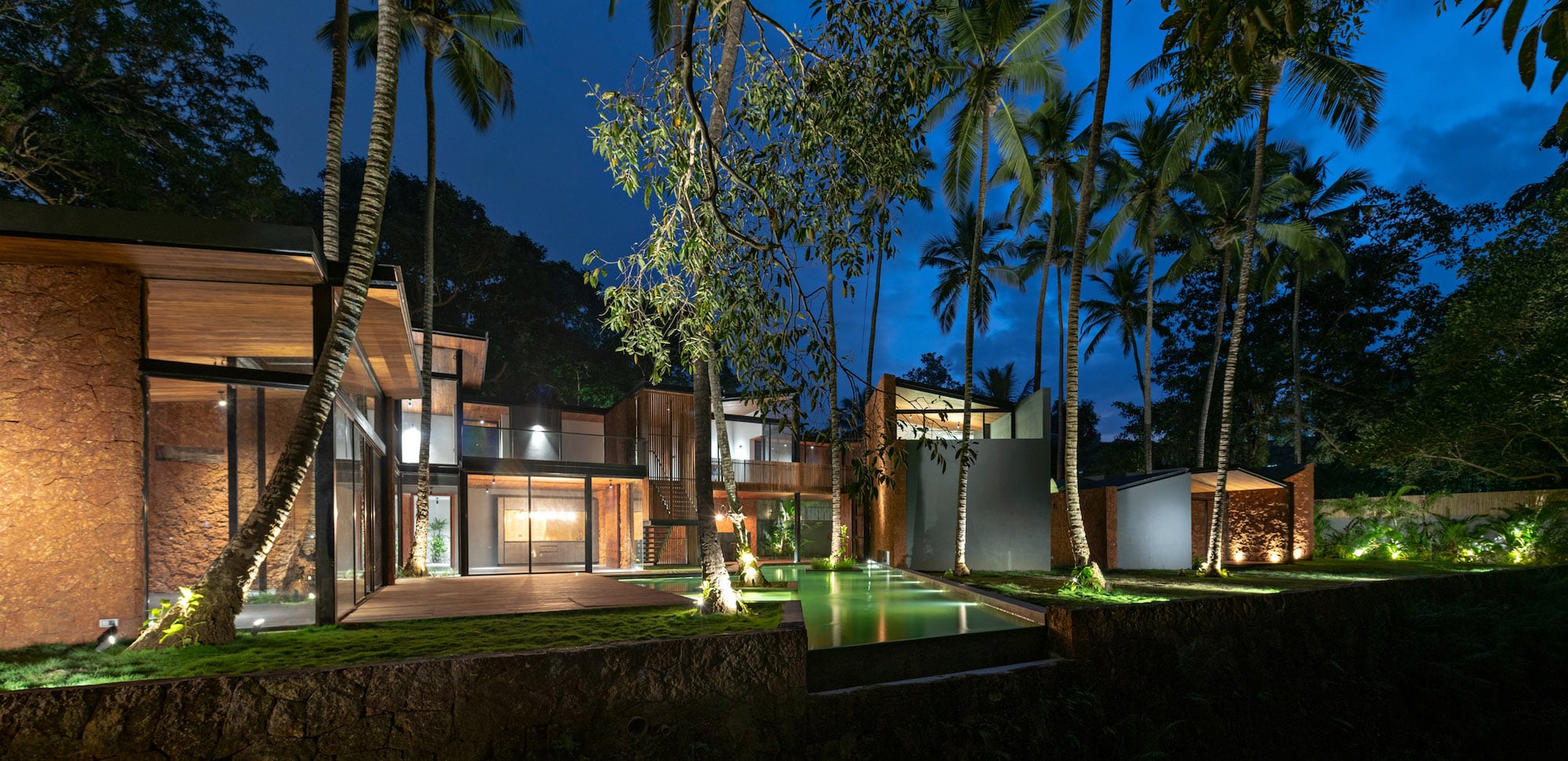
▼后花园 The rear garden


建筑设计采用了热带沿海果阿邦独特的地方特色和材料,暴露的当地红土石墙、倾斜的屋顶和由100年历史的可回收柚木制成的屏风,而景观设计则由当地的热带物种(主要是各种棕榈树)组成,这些绿色植物可以常年保持着繁茂。
The building design adopts distinct local features and materials of the tropical coastal state of Goa, with exposed local laterite stone walls, sloping roofs and screens made from 100-year-old recycled teak wood, while the landscape design consists of local tropical species (mostly various types of palms) that maintain their lush greenery through the year.
▼红土石墙 Local laterite stone walls
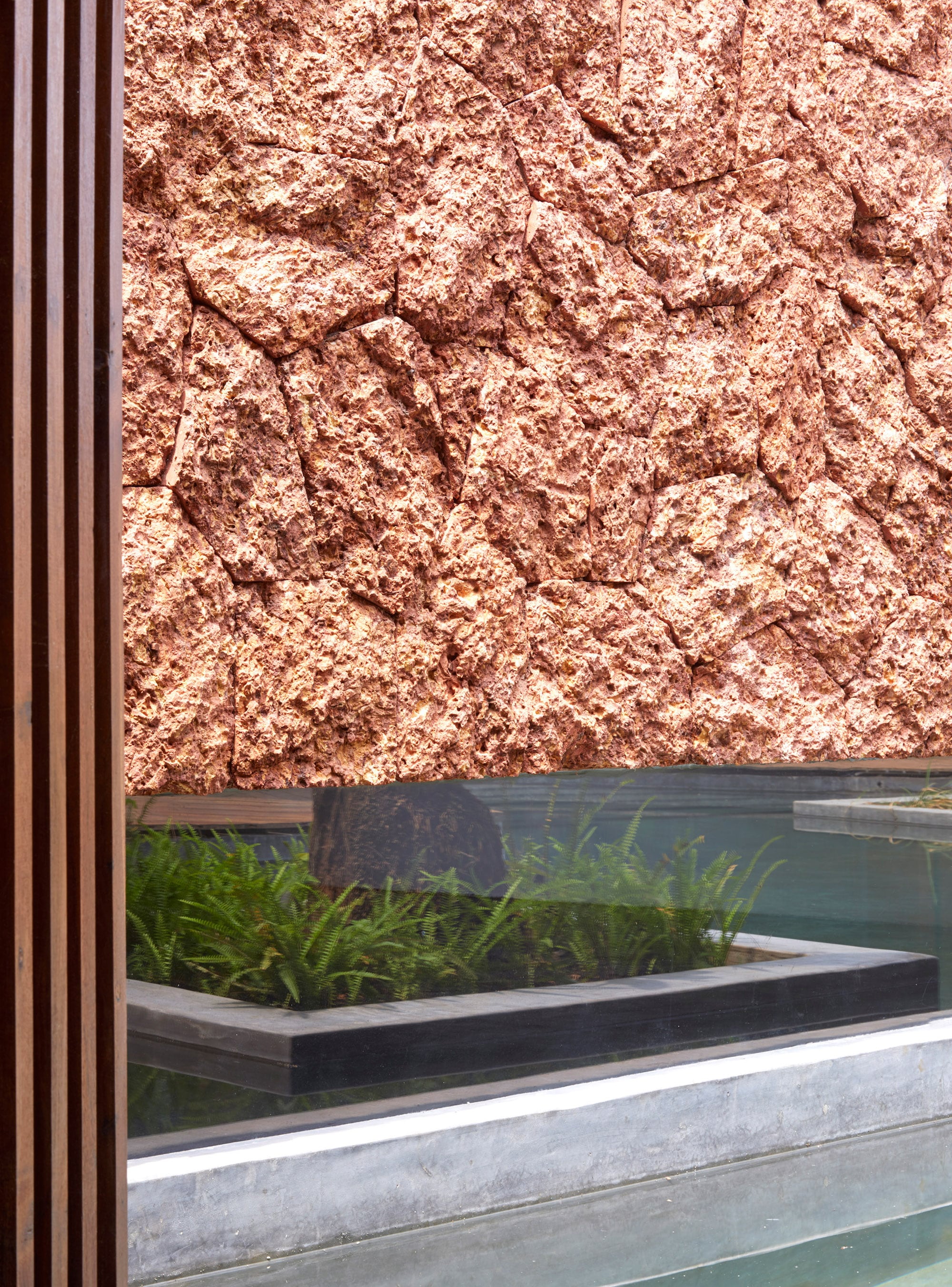
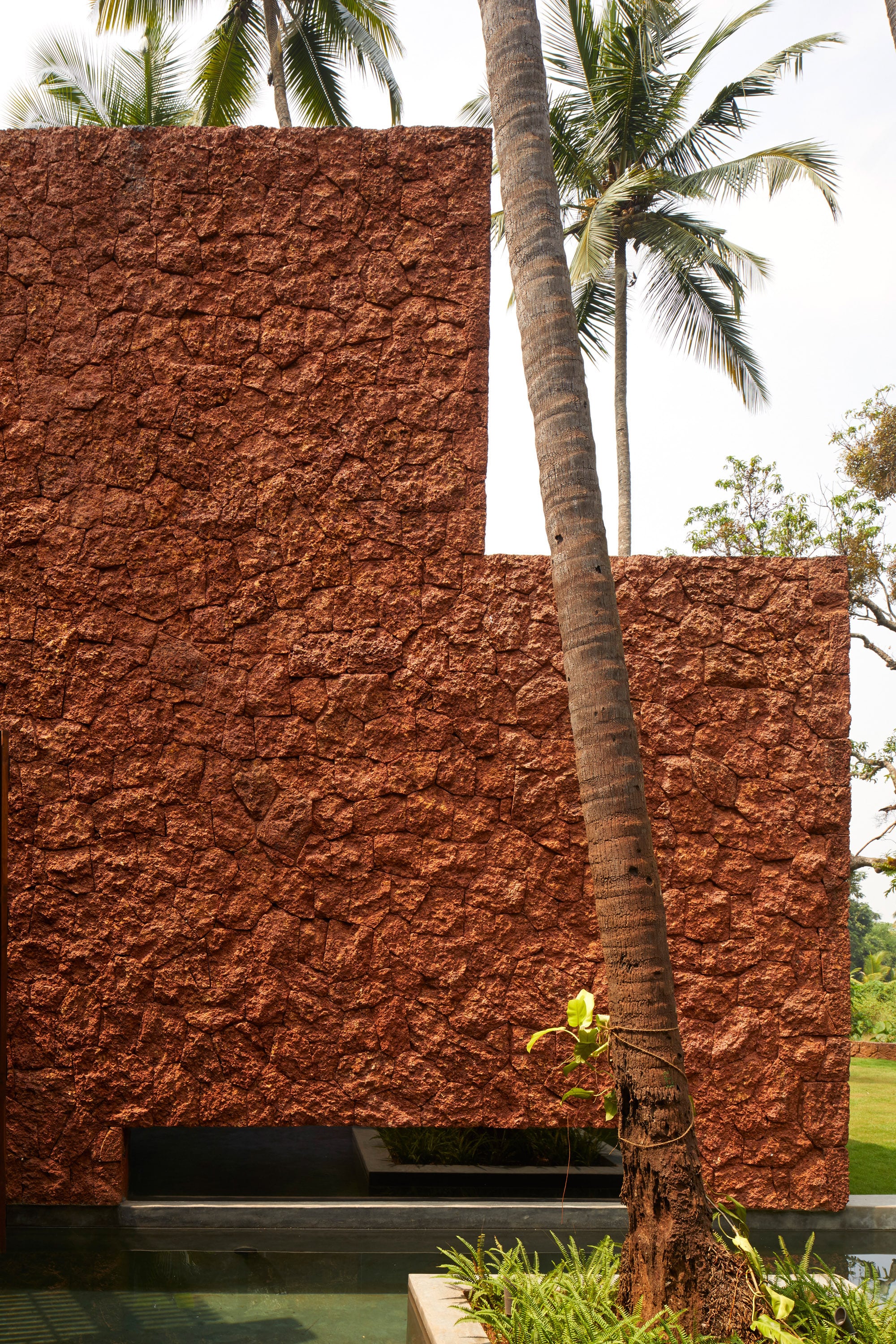
▼屏风 screen

▼倾斜屋顶 Sloping roofs
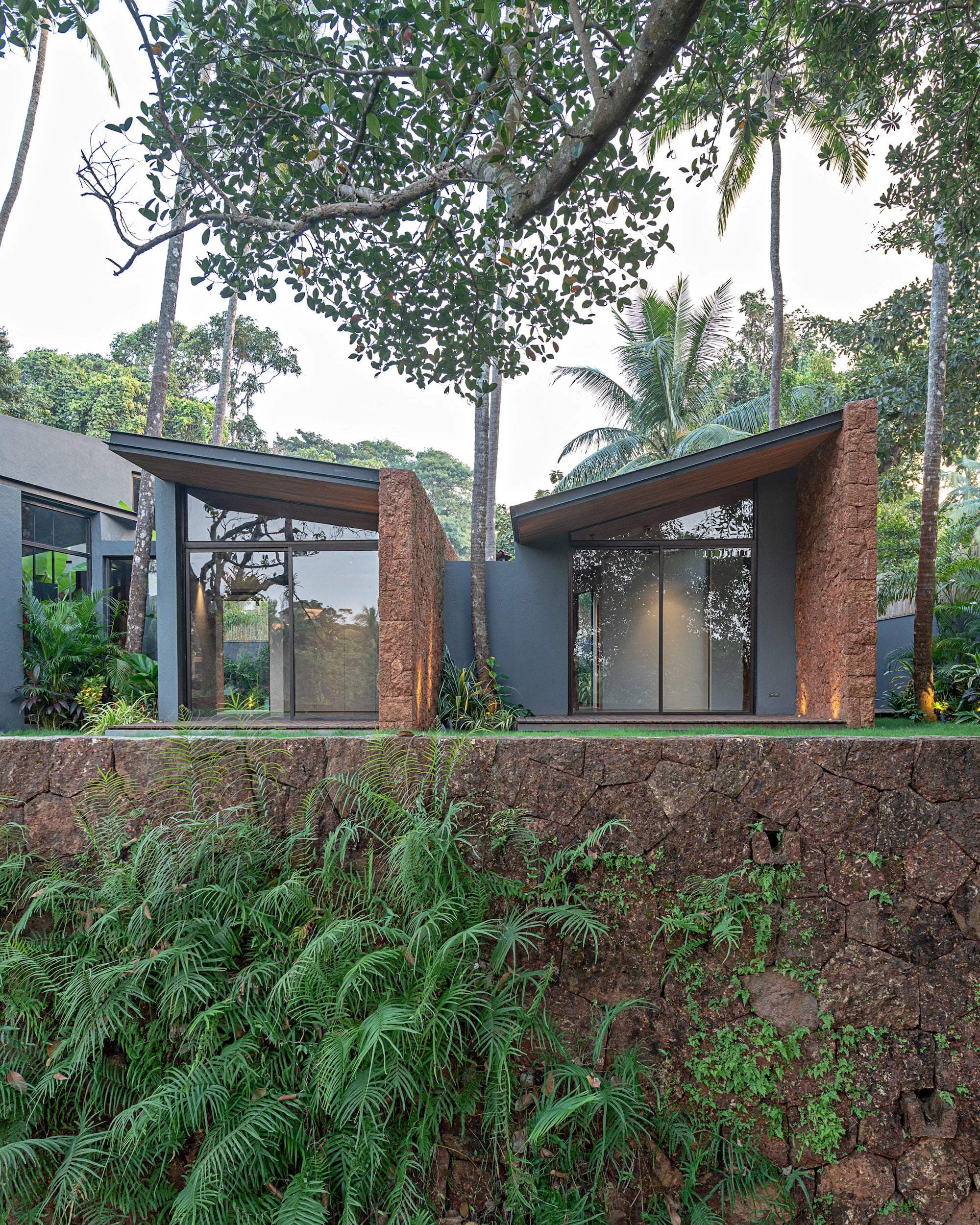
▼棕榈树 Palms

为了适应季风,建造不同角度的屋顶,强调了建筑中自然的渗透和小体量分离的美感。覆盖每个单元的间隙屋顶单独收集雨水,同时在视觉上进一步将建筑物与郁郁葱葱的景观融为一体。内部和外部的界限是模糊的,巨大的开放空间连接着每个生活空间。虽然到处充满了阳光和空气,所有的东西都是开放的,房子仍然是非常私人的。红土墙在在外表上隔热保护了每个房间,在保持隐私的同时,也为北向视野提供了最佳视角。由于红土墙、开放的北立面和开放的内部庭院的热量,该房屋创造并设计成对其选址有环境响应,尽可能作为可持续的私人住宅,同时尊重当地环境和地理。
Roofs pitched at different angles pay homage to the monsoons and accentuate the staccato nature and fragmented aesthetic of the building. The interstitial roofs which cap each unit individually harvest rainwater, while further visually integrating the building in the lush landscape.Boundaries between the inside and outside are blurred and vast open spaces connect each living space.While everything is open and filled with light and air, the house is still very private. The laterite walls thermally and visually shield each room, maintaining privacy while orienting for the best views of the northern field.With the thermal mass of the laterite walls, open northern facades & open internal courtyards, the house creates and is designed to be environmentally responsive to its siting, sustainable as far as a private home can be, while respecting the local environment and geography.
▼设计概念&过程 Design Concept & Process
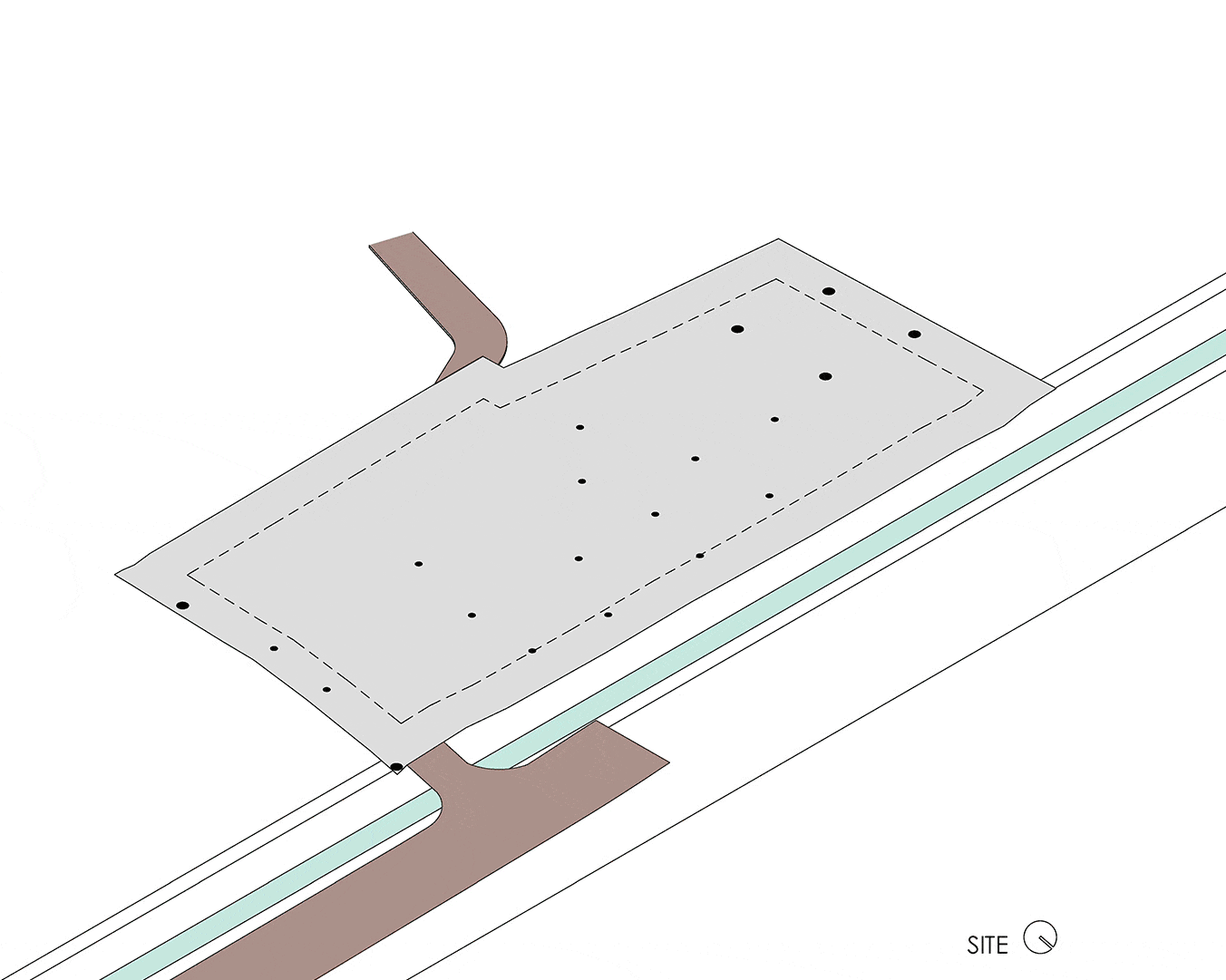
▼北向视角 the views of the northern field

▼游泳池 Pool

主入口的特点是一种戏剧性的渐强,视野随着脚步而变宽——先是一些裸露的红土石头,然后是水池的一瞥,然后是花园,最后是远处广阔的田野。一边是一间采光良好的客厅,里面有花园和裸露的砖石墙。另一边是一个开放式厨房和餐厅,配有一个小酒吧,可以俯瞰广阔的露天平台和游泳池(三个不同的水体被柚木桥和树木岛隔开)。
The main entrance features a kind of dramatic crescendo, with a view that widens with each footstep – first some exposed laterite stone, then a glimpse of the pool, then the gardens and finally the wide field beyond. At one side is a sky-lit living room with internal garden and walls of exposed masonry. At the other side is an open kitchen and dining room featuring a wet bar, all overlooking an expansive deck and pool (three distinct water bodies are separated by teak-wood bridges and tree islands).
▼客厅 Living room
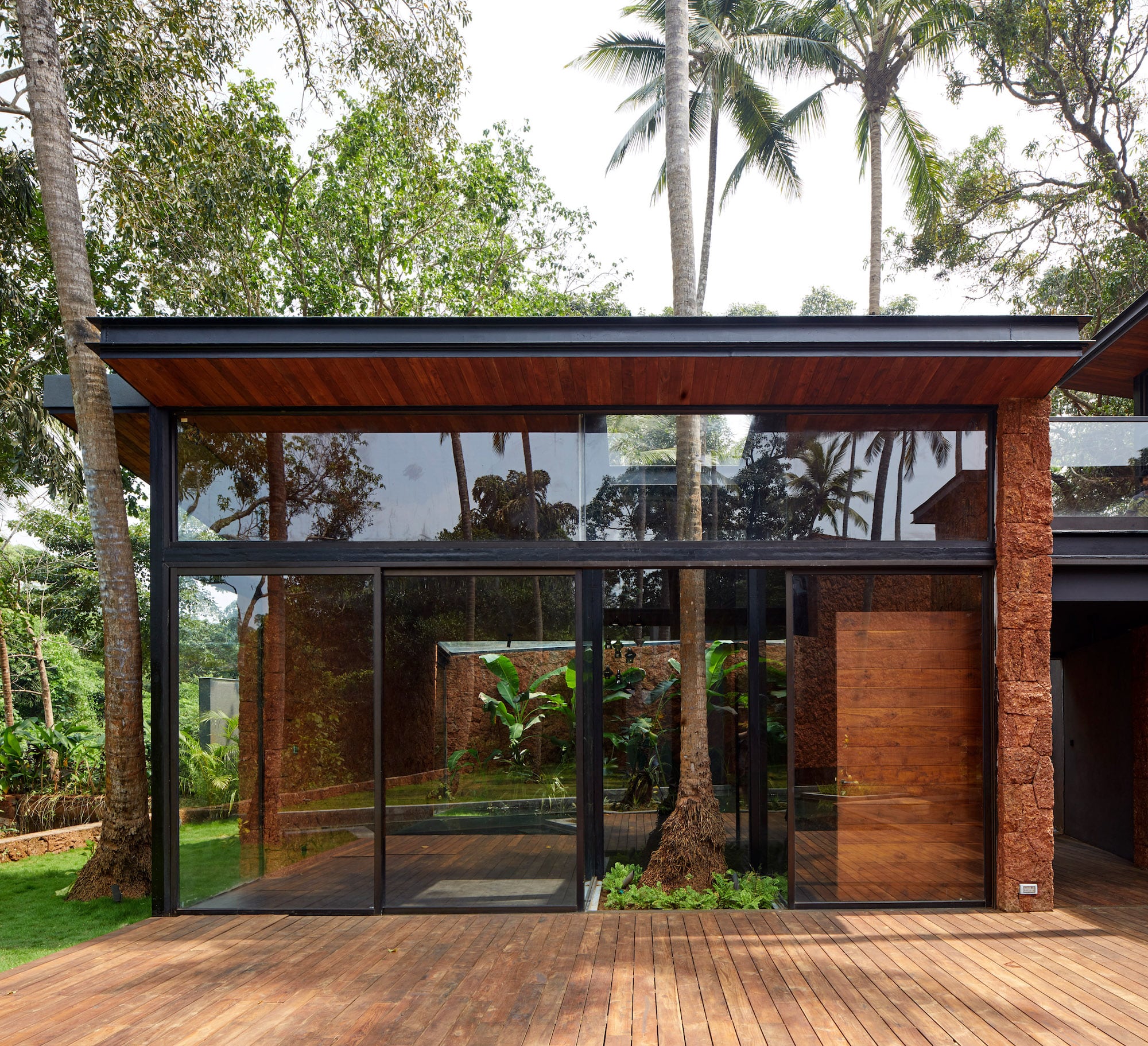

▼小酒吧 A wet bar
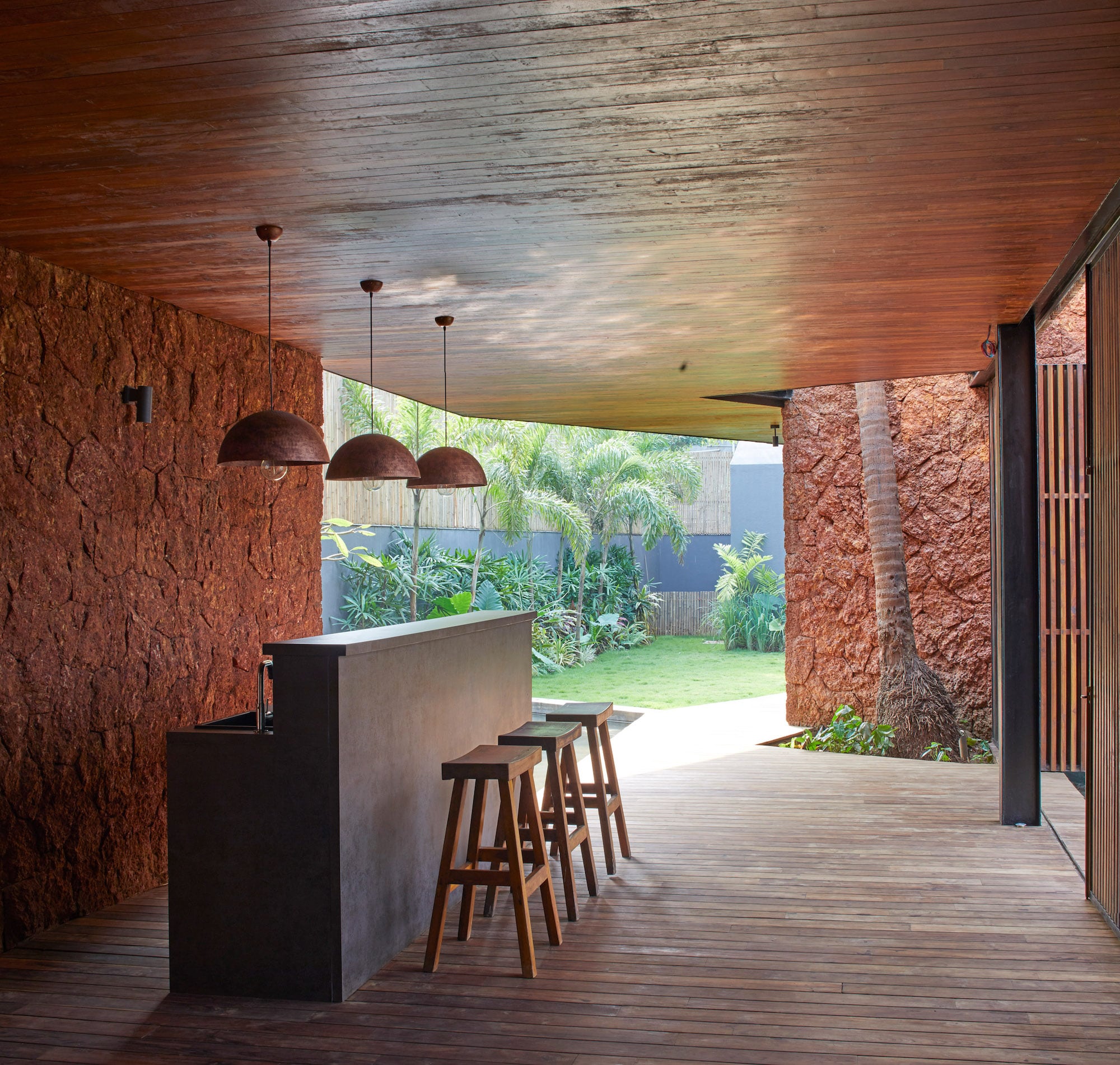

无边泳池与别墅完全融为一体,将半私人区域与私人区域分开。卧室紧靠游泳池,地板上有一扇狭长的窗户,可以让水波反射到天花板上。所有较低层的浴室都有内置的下沉浴缸,以欣赏毗邻的庭院景观。最后一间卧室配有一间宁静的室内外浴室,光线和阴影创造出不断变化的景观。
The infinity swimming pool is fully integrated with the villa, dividing the semi-private areas from the private ones.A bedroom abuts the pool, with a slit window along the floor that enables the ripples of water to reflect onto the ceiling. All the lower floor bathrooms have in-built sunken bath tubs to enjoy the adjoining courtyard landscapes. The last bedroom features a serene indoor-outdoor bathroom where light and shadow create everchanging landscapes.
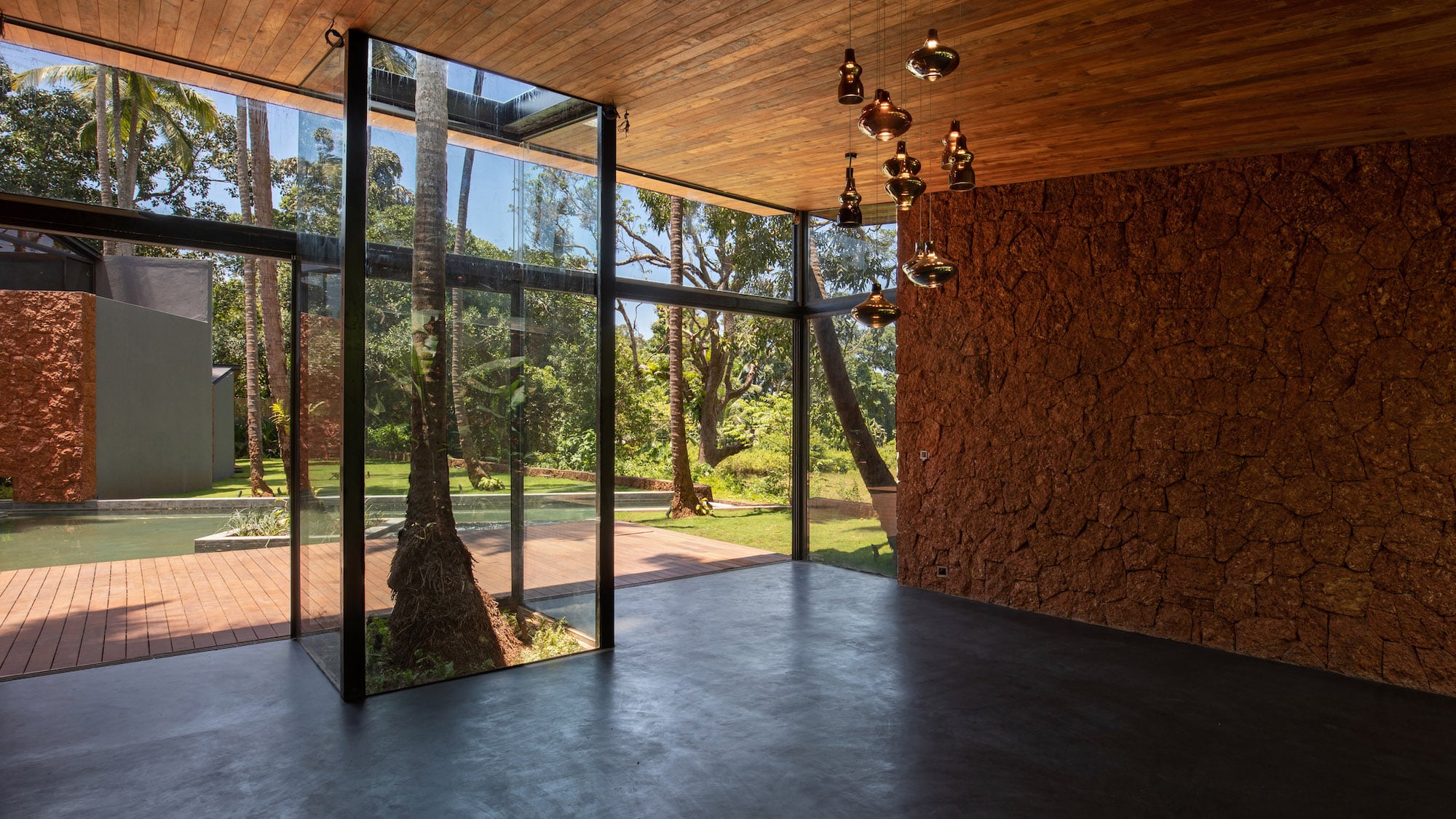
▼浴室 Bathroom

在上层有一间家庭房、化妆室、顶层花园和一间精致的主人套房。后者包括一个卧室和一个开放式图书馆,有一个窗户的“天桥”,将卧室与步入式壁橱和大型主浴室隔开。楼上的景色不仅包括北面的开阔田野,还包括南面的“Goan丛林景观”,附近村庄的屋顶布满红色瓷砖。
On the upper floor there is a family room, powder room, top-floor garden and an exquisite master suite. The latter consists of a bedroom and an open library, with a windowed “sky bridge” separating the bedroom from a walk-in closet and large master bathroom. The views from upstairs consist not only of the open field to the north, but also a “Goan jungle view” to the south, replete with red-tile rooftops of the adjoining village.
▼2楼布局 The lay out of level 2
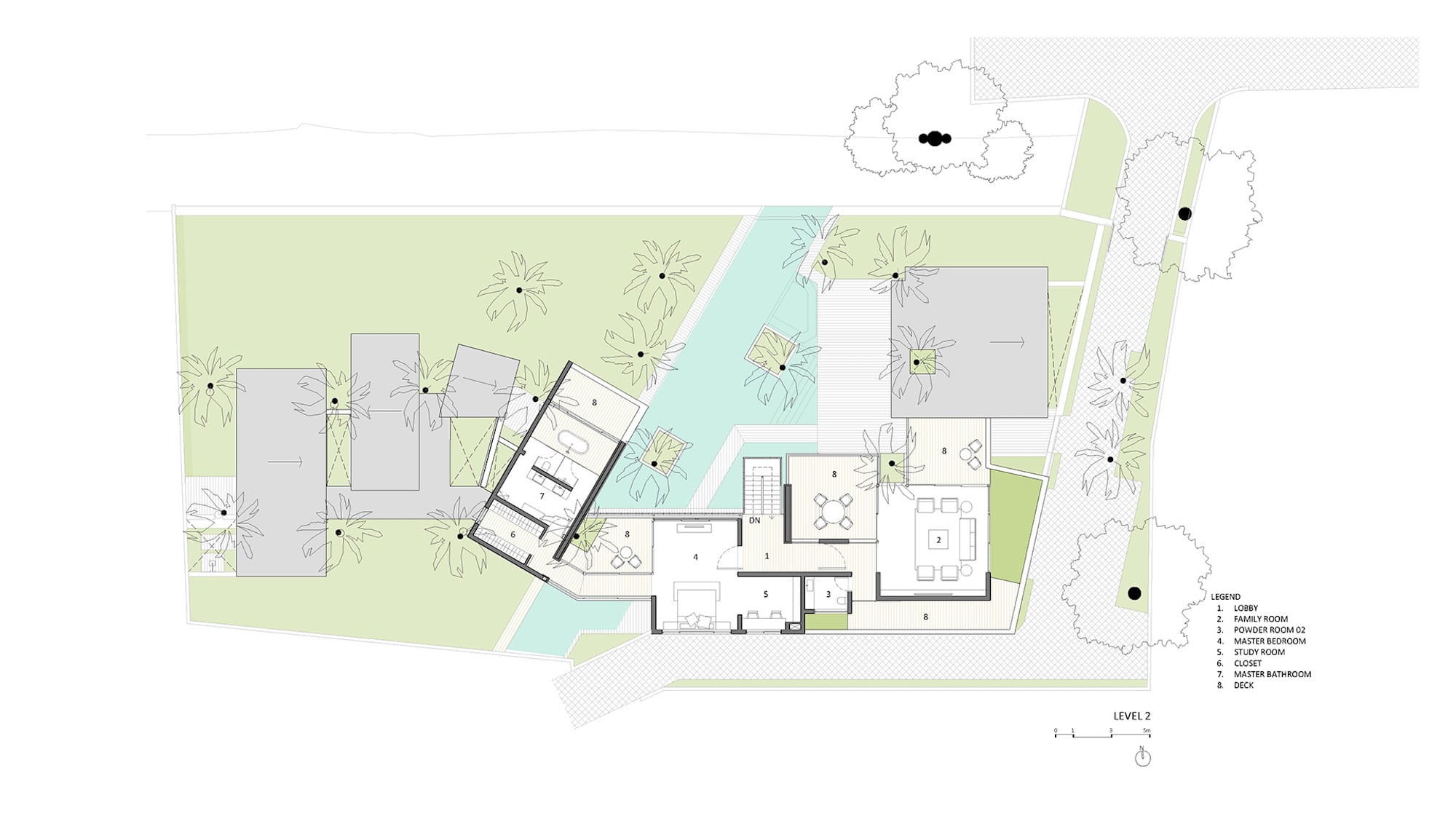
▼露天平台 expansive deck
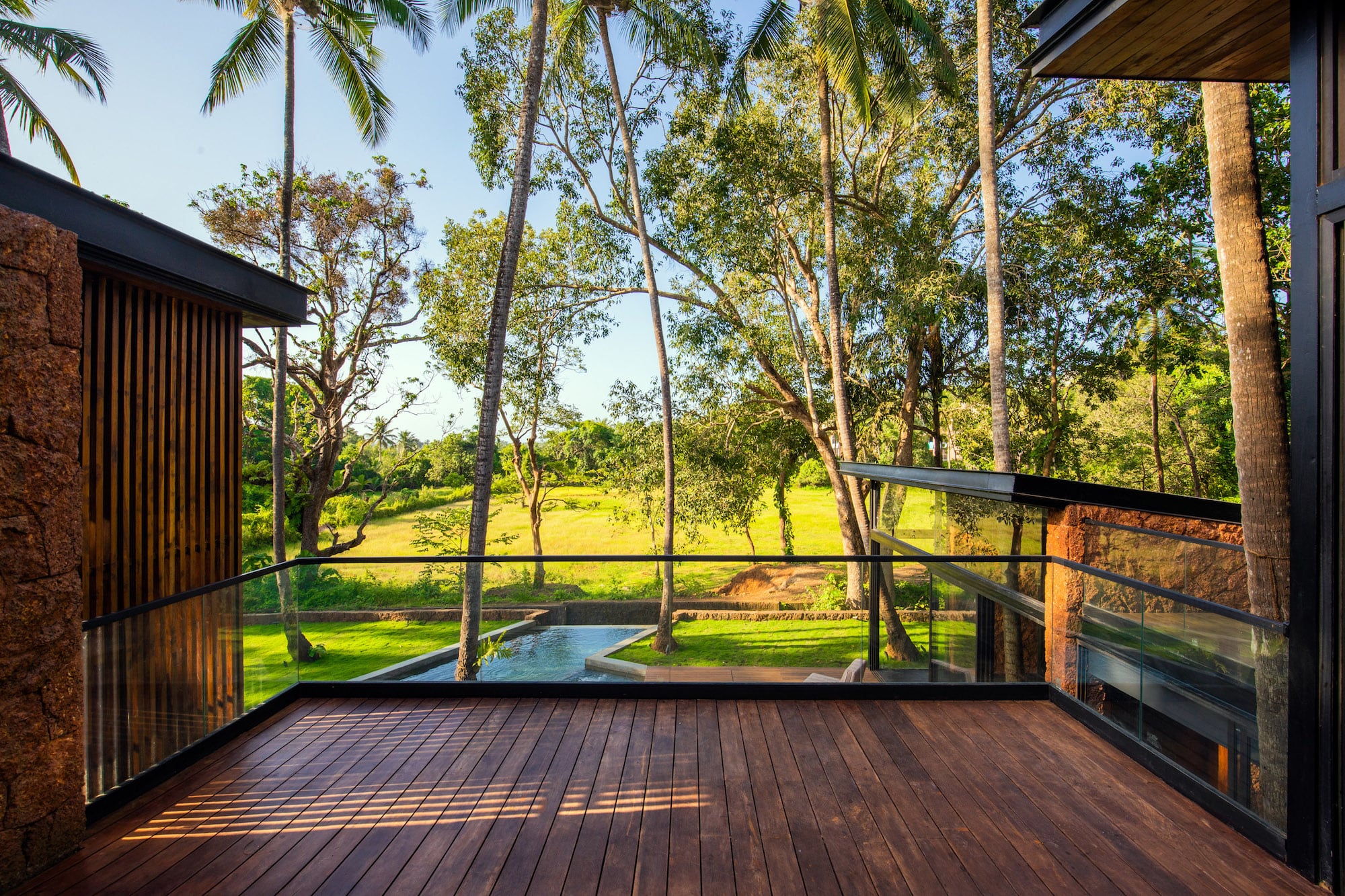
▼3楼布局 The lay out of level 3
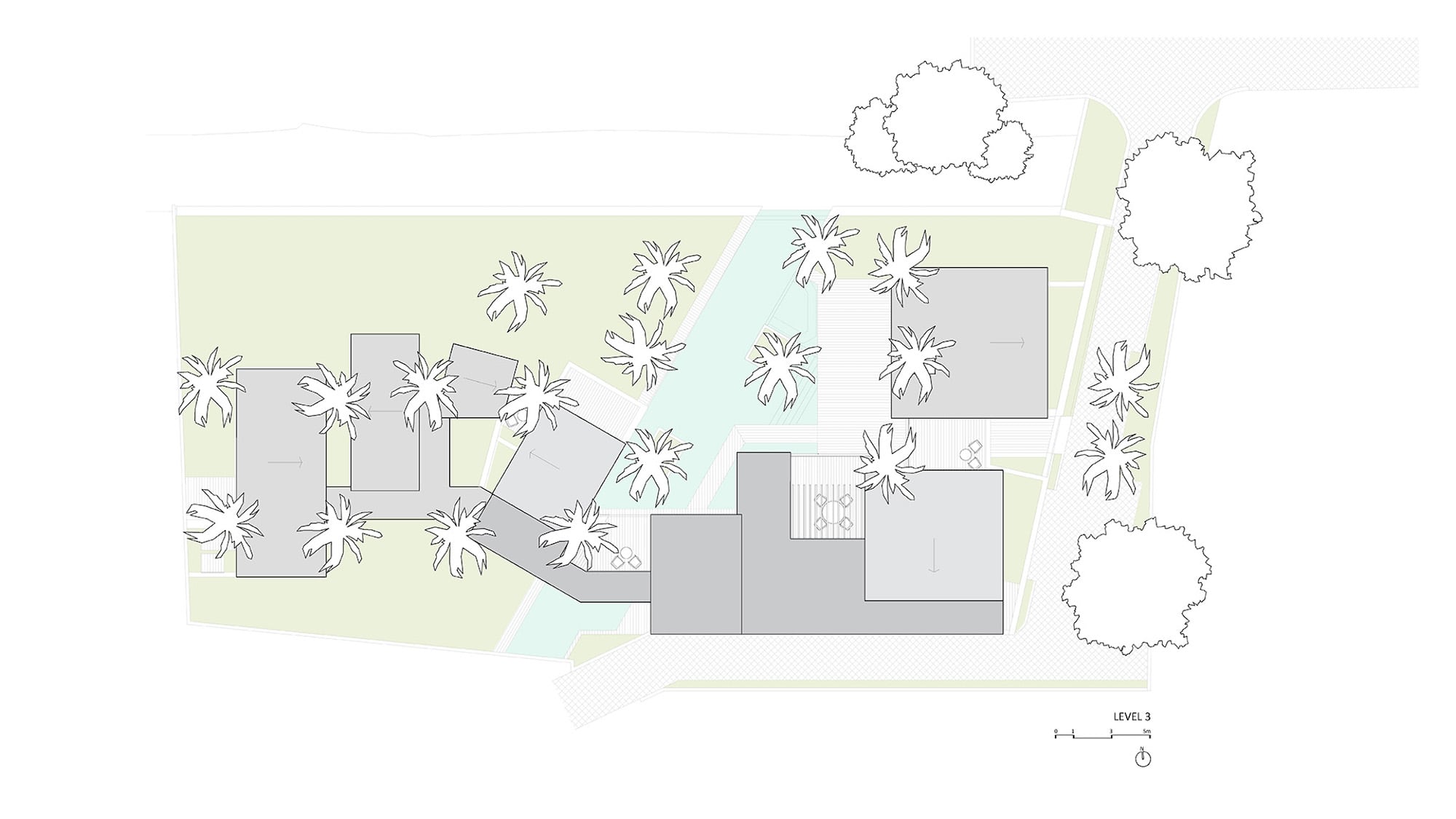
▼立面图 architectural elevation
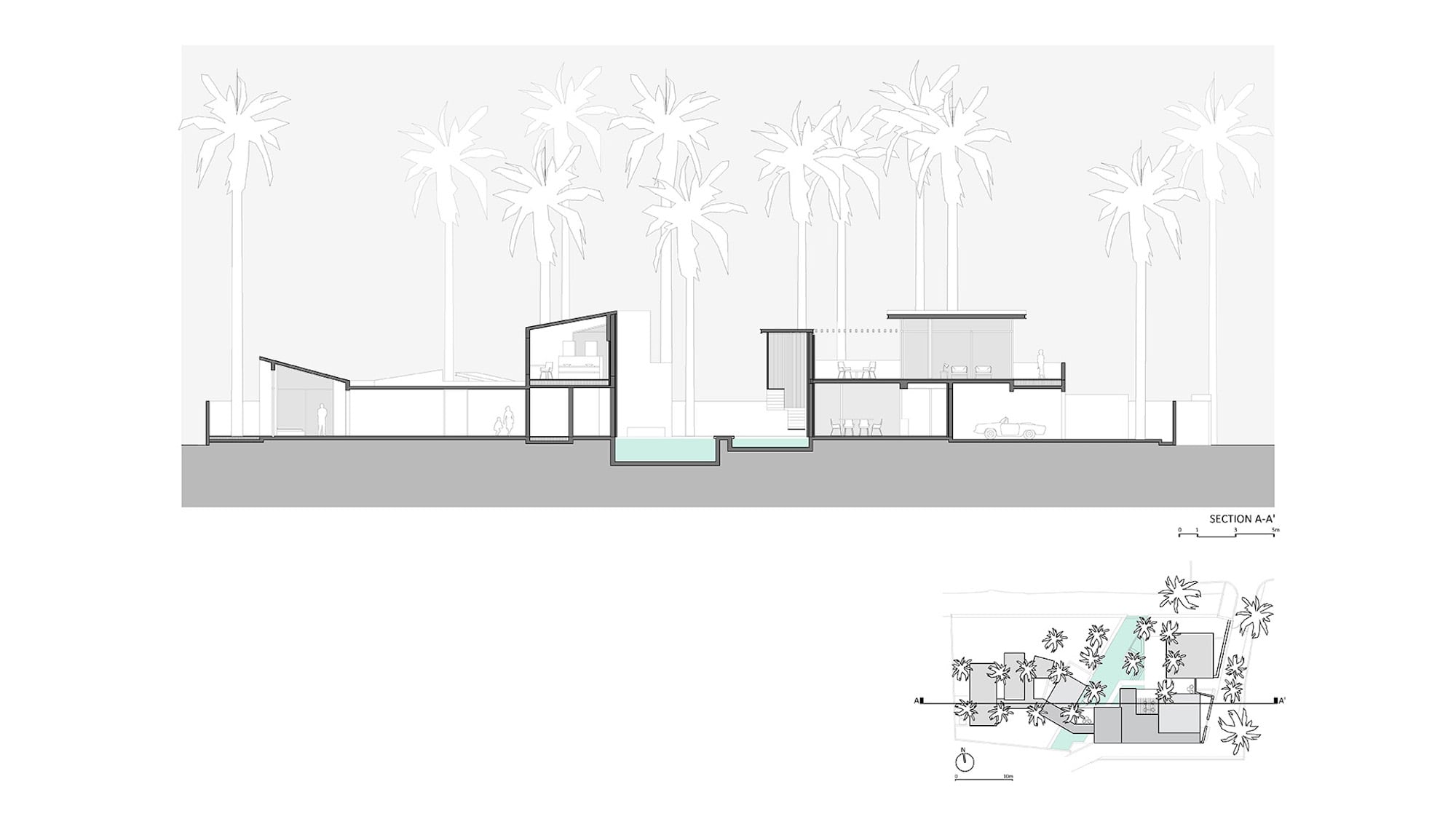
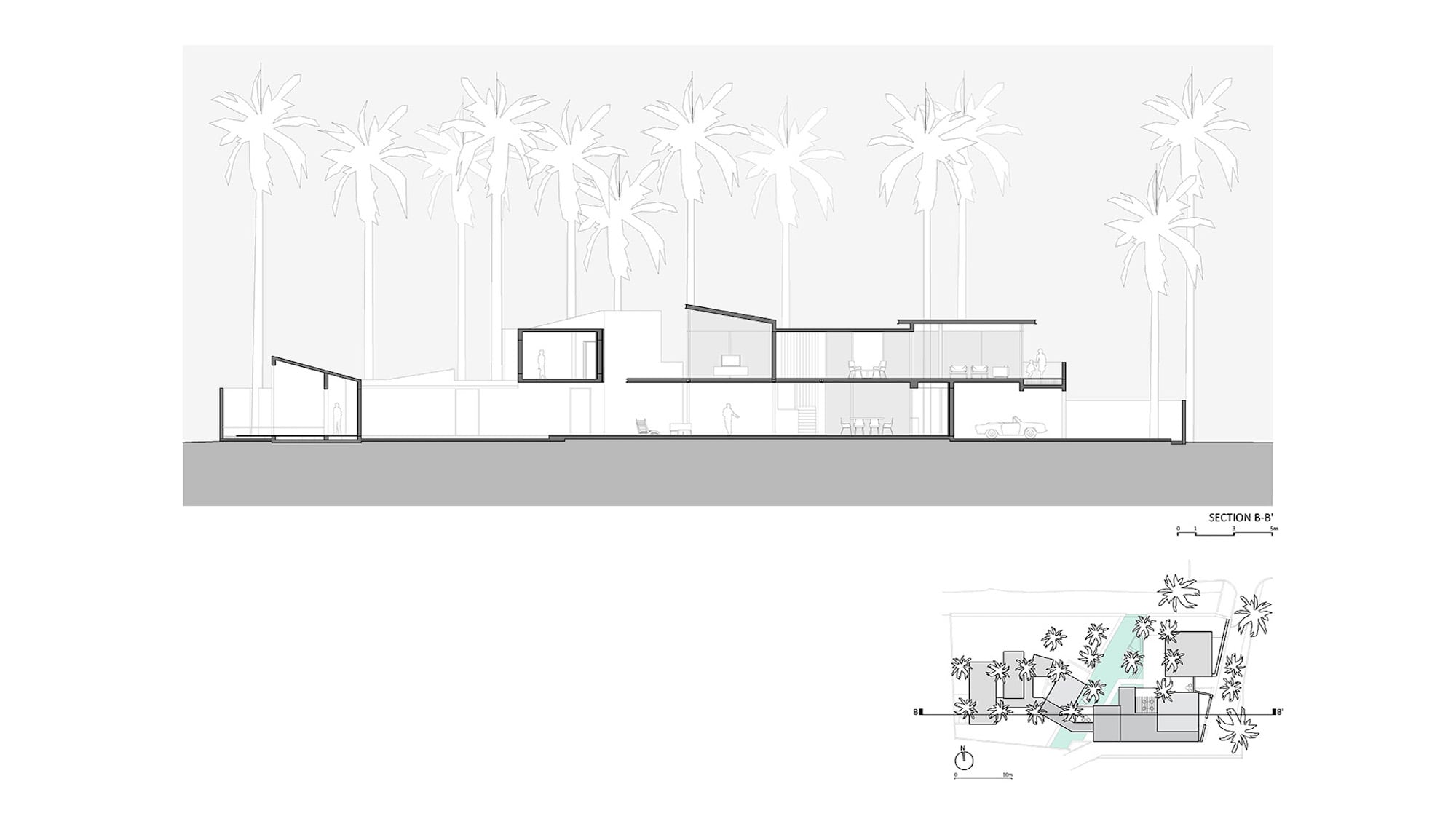

项目名称:棕榈别墅
客户:Marisha Ann Dutt & Steven Gutkin (Anokha)
建筑师事务所:Abraham John Architects
设计团队:Abraham John, Alan Abraham, Anca Florescu, Neha Gupta, Niranjan Fulsundar, Vatsal Mistry
项目地点:印度果阿桑古达
总建筑面积:610平方米
地块面积:1300平方米
完成年份:2018年
图片来源:Edmund Sumner, Atul Pratap and Alan Abraham
Project name: Villa in the Palms
Clients: Marisha Ann Dutt & Steven Gutkin (Anokha)
Architect’s Firm: Abraham John Architects
Design Team: Abraham John, Alan Abraham, Anca Florescu, Neha Gupta, Niranjan Fulsundar, Vatsal Mistry
Project location: Sangolda, Goa, India
Gross Built Area: 610m
Plot Area: 1300平方米
Completion Year: 2018
Photo credits: Edmund Sumner, Atul Pratap and Alan
更多 Read more about: Abraham John Architects




0 Comments